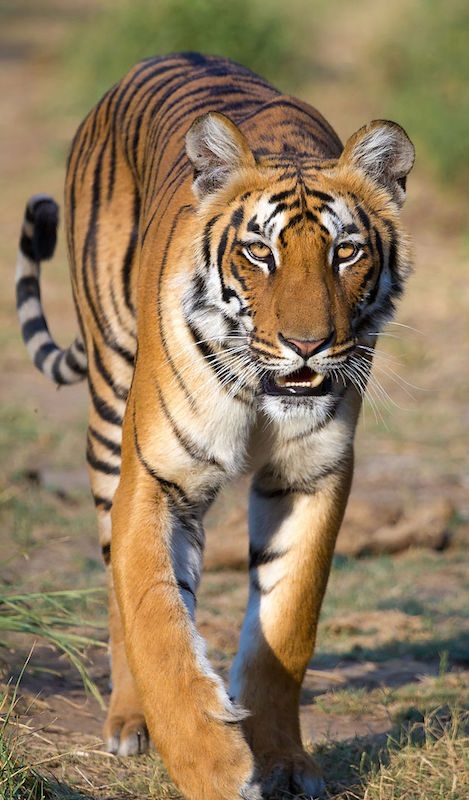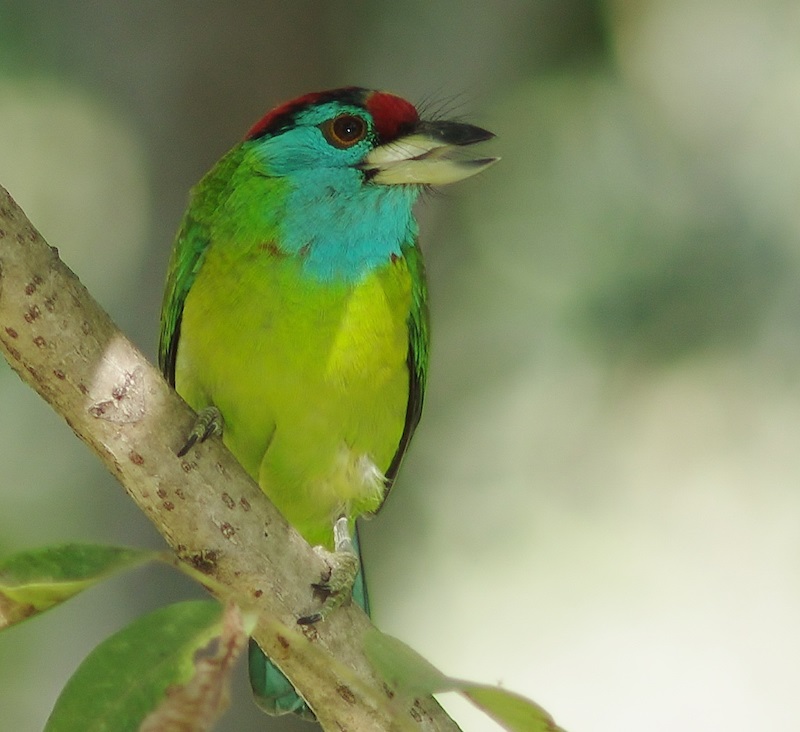The Kingdom of Bhutan is a small, landlocked nation nestled in the southern slopes of the Eastern Himalaya. To its north lies the Tibet Autonomous Region of China and to the west, south and east lies the Indian states of Sikkim, Bengal, Assam and Arunachal Pradesh.
The terrain is some of the most rugged in the world, characterised by huge variations in altitude. Within the 150 miles between the southern and northern borders, Bhutan’s elevation rises from 150 to more than 7,500 metres. This great geographical diversity combined with equally diverse climate conditions contributes to Bhutan’s outstanding range of biodiversity and ecosystems.

The wildlife habitats of Bhutan can be roughly divided into forest, scrub, wetlands, alpine habitats, agricultural land & that land around human habitation.
Unlike other Himalayan countries, Bhutan still retains much of its forest intact. The country’s forests are rich, diverse & beautiful, forming some of the best remaining representatives of forest habitats in the Himalayas.

The tiger, one-horned rhino, golden langur, clouded leopard, hispid hare and the sloth bear live in the lush tropical lowland and hardwood forests in the south. In the temperate zone, grey langur, tiger, common leopard, goral and serow are found in mixed conifer, broadleaf and pine forests. Fruit bearing trees and bamboo provide habitat for the Himalayan black bear, red panda, squirrel, sambar, wild pig and barking deer. The alpine habitats of the great Himalayan range in the north are home to the snow leopard, blue sheep, marmot, Tibetan wolf, antelope and Himalayan musk deer.
Flora and birds abound with more than 770 species of bird and 5,400 species of plants known to occur throughout the kingdom.
Forests & bushes support the highest proportion (84%) of the country’s breeding birds. In addition 57% of Bhutan’s globally threatened birds & 90% of the country’s restricted-range birds are dependent on forests.

Subtropical & warm broadleaved forest grows along the foothills up to 1,200m. Globally threatened Rufous-necked Hornbill is virtually confined to these forests & requires mature fruiting trees. It is common in Bhutan but rare & declining elsewhere in its range. The endangered species, the Beautiful Nuthatch is rare & poorly known and has been found only in Bhutan in warm broad-leaved forest. These forests are also important for the enigmatic Chestnut-breasted Partridge that is both internationally threatened & restricted in distribution. Other species with restricted ranges, such as Yellow-vented Warbler and White-naped Yuhina are almost confined to subtropical & warm broad-leaved forests. These are also the main habitat of Broad-billed Warbler & Rufous-throated Wren Babbler.
Cool broad-leaved forest grows on moist exposed slope up to 2,900m above the warm broad-leaved forests. They are second only to the subtropical & warm broad-leaved forests in their bird species richness. Globally threatened Chestnut-breasted Partridge and Blyth’s Tragopan have been found here, the latter in the far east. Wood Snipe, an altitudinal migrant, probably winter in the cool broad-leaved forests.
Two globally threatened wetland species occur regularly in Bhutan – The rare White-bellied Heron breeds & frequents only those rivers & lakes in dense broad-leaved forests below 1,400m, and Pallas’s Fish Eagle (which has bred) inhabits larger rivers below 1400m. Typical species breeding along rivers & streams are kingfishers, fork-tails, dipper, wagtails, blue Whistling-Thrush & White-capped Water Redstart.
Phobjikha valley, in central Bhutan, is an important wintering ground for Black-necked Cranes, Black-tailed Crake & Ruddy-breasted Crake, which are found in wetlands in spring & summer. It is also home to the single species family; Ibisbill.

Bhutan has a diverse avifauna. 616 species have been recorded so far & many more are likely to be found as more people visit the country to see its birds. Around 464 species are resident although winter visitors that breed further north augment some of these. Some residents are sedentary throughout the year, whilst others undertake irregular movements, either locally or more widely in the region, moving around according to the abundance of their food supply.
About 40 species are summer visitors or partial migrants to Bhutan & that include species such as cuckoos, swifts, bee-eaters, warblers, flycatchers & drongos. The migration routes of a number of these summer migrants are unknown. Many species winter further south in the subcontinent including Common Hoopoe, Barn Swallow and Ashy Drongo. Other species such as the White-throated Needletail & Asian Emerald Cuckoo, move southeast, perhaps as far as Malaysia & Indonesia, although Bhutanese birds may not travel so far. The Lesser Cuckoo winters in Africa.
Around 50 species are known to over winter in Bhutan. These include ducks, waders, birds of prey, thrushes, finches & buntings.
14 species recorded in Bhutan have been identified as globally threatened by BirdLife International. These include White-bellied Heron, Pallas’s Fish Eagle, Chestnut-breasted Partridge, Blyth’s Tragopan, Wood Snipe, Dark-rumped Swift, Rufous-necked Hornbill, Grey-crowned Prinia and Beautiful Nuthatch, all of which probably breed in Bhutan. The country is an important wintering ground for another internationally threatened species – the Black-necked Crane. Greater-spotted Eagle is a rare passage migrant, Baer’s Pochard, Imperial Eagle and Hodgson’s Bushchat are regular vagrants.
Major Source: Fatbirder
Map Source: Googlemaps™
Photo Source: Birding Ecotours
